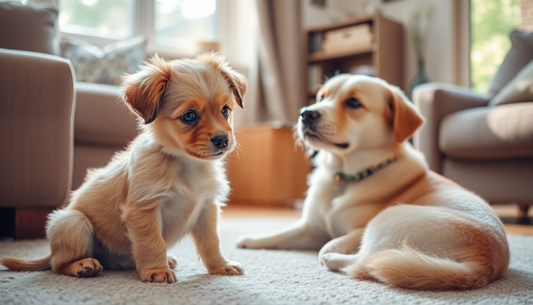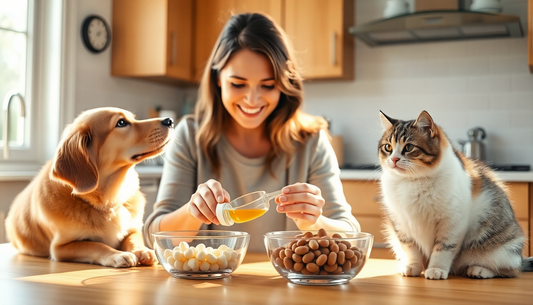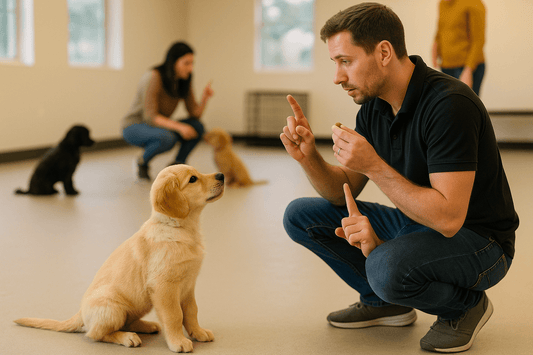The Unspoken Language of Canine Love
The bond between humans and dogs is one of the most profound relationships in the animal kingdom. While our furry companions can't verbally express their feelings, they have developed countless unique ways to show their love and devotion. Understanding these signals can deepen your connection with your four-legged family member and help you appreciate the emotional intelligence of your beloved pet.
Body Language: The Silent Expressions of Love
Tail Wagging with Purpose
Not all tail wags are created equal. When your dog loves you, their tail wag is typically loose, relaxed, and involves their entire rear end. A full-body wiggle accompanied by a wagging tail is your dog's way of saying they're genuinely happy to see you.
The Loving Gaze
Eye contact between dogs and humans releases oxytocin - the same hormone involved in human bonding. When your dog looks at you with soft, relaxed eyes, they're literally sharing a moment of love. This gentle gaze is different from a hard stare, which can indicate tension.
Leaning In for Love
Dogs who lean against their owners or seek physical closeness are demonstrating trust and affection. This behavior shows they feel safe and secure in your presence, viewing you as their source of comfort and protection.
Vocal Love Letters
Gentle Communication
Dogs use various vocalizations to express affection. Soft whining when they see you, specific welcoming barks, and contented sighs are all ways your dog communicates their emotional state. These gentle sounds are reserved for their favorite humans.
The Language of Contentment
Pay attention to the soft sounds your dog makes when relaxed in your presence. These quiet vocalizations often indicate contentment and love, showing they feel comfortable enough to 'talk' to you.
Behavioral Displays of Devotion
Your Personal Shadow
If your dog follows you from room to room, they're showing their desire to be near you. This 'velcro dog' behavior demonstrates their attachment and preference for your company over solitude.
Seeking Touch and Connection
Dogs who nudge your hand for pets, rest their head on your lap, or curl up next to you are actively seeking physical connection. This behavior shows they associate you with comfort and security.
Gift-Giving Behavior
When your dog brings you their favorite toy or even random objects, they're sharing something precious with you. This gift-giving behavior is a sign of trust and affection, showing they want to include you in their world.
The Science Behind Canine Love
Hormonal Bonds
Research shows that both dogs and humans experience increased oxytocin levels during positive interactions. This 'love hormone' creates the same bonding response seen between human parents and children.
Emotional Mirroring
Dogs are remarkably attuned to their owner's emotions and often mirror their feelings. This emotional synchronization demonstrates the deep connection between human and canine companions.
Stress Relief Partnership
Studies indicate that dogs experience reduced stress levels when near their beloved humans, and the feeling is mutual. This physiological response shows the genuine comfort dogs find in our presence.
Misunderstood Love Signals
Enthusiastic Jumping
While jumping can be problematic behavior, it often stems from excitement and love. Your dog is trying to get closer to your face - their way of greeting and showing affection.
Licking as Affection
Dog kisses through licking are genuine displays of affection. This behavior mimics puppyhood grooming and bonding behaviors, showing your dog views you as family.
Sleeping Nearby
When dogs choose to sleep near or on their owners, they're demonstrating ultimate trust. In the wild, sleeping is when animals are most vulnerable, so choosing to rest near you shows complete faith in your protection.
Building Stronger Bonds Through Understanding
Recognizing and appreciating how your dog expresses love can transform your relationship. By understanding their unique communication style, you can respond appropriately and strengthen your bond. Remember that every dog is individual - some are more demonstrative while others show love in subtle ways.
The next time your dog exhibits these loving behaviors, take a moment to acknowledge their affection. Whether it's through gentle petting, soft words, or simply spending quality time together, reciprocating their love helps build an even stronger connection.
At Happy Tails, we believe that understanding your dog's emotional needs is just as important as meeting their physical ones. When you truly comprehend how your furry friend says 'I love you,' you'll discover that the feeling is beautifully mutual.








